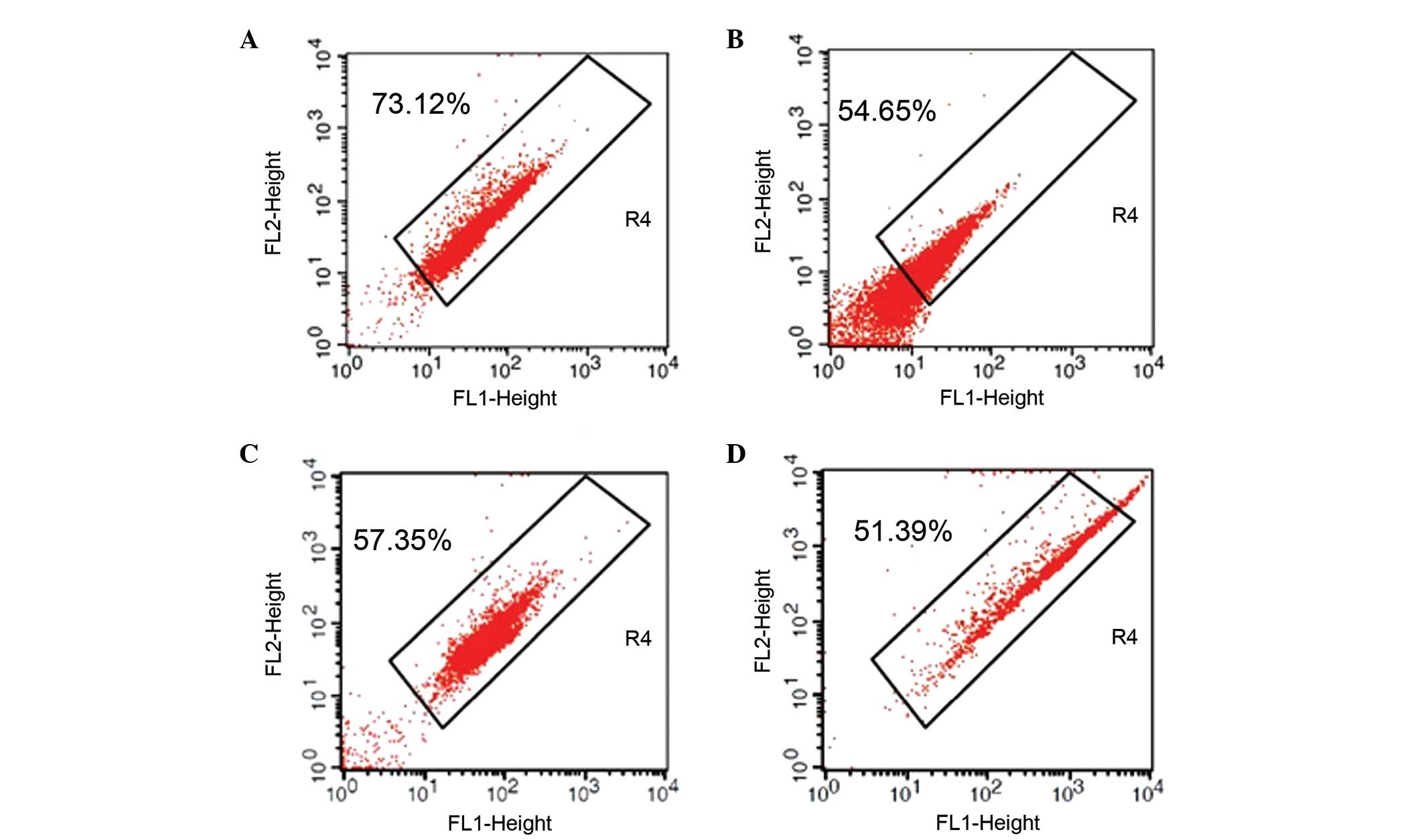Oxygen free radicals and mitochondrial signaling in oligospermia and asthenospermia
- Authors:
- Published online on: July 29, 2014 https://doi.org/10.3892/mmr.2014.2428
- Pages: 1875-1880
Metrics:
Total
Views: 0 (Spandidos Publications: | PMC Statistics:
)
Total PDF Downloads: 0 (Spandidos Publications: | PMC Statistics:
)
Abstract
The aim of this study was to investigate the roles of oxygen free radicals and mitochondrial signaling in semen disorders, in particular, how this induces low concentrations and reduced motility of sperm. Ejaculate samples were obtained from 120 young adult males (mean age, 28.7±5.3 years) with normal semen (n=30), oligospermia (n=30), asthenospermia (n=30) and oligoasthenozoospermia (n=30). The malondialdehyde (MDA) content, total superoxide dismutase (T‑SOD) activity and glutathione peroxidase (GSH‑Px) activity of the sperm samples were determined by enzymatic assays. Mitochondrial membrane potential (MMP) was determined by flow cytometric detection of accumulated membrane‑permeable JC‑1 fluorescent dye. The mRNA and protein expression levels of apoptosis‑associated genes [Bcl‑2, Bax, cytochrome c (Cyt C) and caspase‑3] were measured by quantitative polymerase chain reaction and western blotting. Intergroup differences were evaluated by Student's t‑test. The sperm samples from all semen disorder groups exhibited significantly lower T‑SOD content and GSH‑Px activity (all P<0.05 versus normal sperm), and the extent of reduction revealed a disorder‑associated trend (asthenospermia < oligospermia ≈ oligoasthenozoospermia). By contrast, the semen disorder groups had significantly higher MDA content (all P<0.05 versus normal sperm); the extent of this increase also revealed a disorder‑associated trend (asthenospermia > oligospermia ≈ oligoasthenozoospermia). The sperm from patients with semen disorders also exhibited significantly lower MMP than normal sperm, as evidenced by lower mean ratios of JC‑1+ sperm per group. The semen disorder groups had significantly higher Bax, Cyt C and caspase‑3 mRNA and protein expression levels in the sperm samples, but significantly lower levels of Bcl‑2 (all P<0.05 versus normal sperm). However, only the extent of increases in Cyt C and caspase‑3 exhibited a disorder‑associated trend (oligospermia > asthenospermia). In conclusion, oxygen free radicals may be involved in reduced sperm concentration and motility, possibly through effects on the mitochondrial apoptotic signaling pathway. Perturbed mitochondrial release of Cyt C may be the distinguishing molecular feature between oligospermia and asthenospermia.











